Upgrading A Legend
As early as 1940, the Red Army was searching for new and improved guns to install onto their latest tanks. The T-34 Exterminator (or T-34/57, as it is known incorrectly in western sources) was a standard T-34/76 chassis with the new and improved ZiS-4 57 mm (2.25 in) gun. However, it was not until the autumn of 1941 that this famous vehicle would see action, with small numbers of this tank defending the heart of the USSR – Moscow.
Design Process
In 1940, the standard 45 mm (1.77 in) K-20 and Model 1934 guns were deemed inadequate for modern anti-tank duties. Therefore, Factory Number 92 was ordered to begin work on a new gun with a caliber between 55 and 60 mm (2.17-2.36). It was meant for use as the latest standard anti-tank gun. On May 19th 1941, testing began on the new 57 mm ZiS-4 anti-tank gun. This gun was designed by V.G Grabin, and was based of the ZiS-2 57 mm (2.25 in) gun. It could fire a 3.14 kg warhead. At a range of 1000 m (1100 yd), the ZiS-4 could penetrate 70 mm (2.76 in) of armor at a 30 degree angle. This gun was also to be modified for mounting on the new T-34.
A prototype T-34 was tested with this new gun installed. It was almost identical to a standard production Model 1941 tank, except with a longer barrel and a flat gun mantlet nose. The trial results were highly impressive. However, noticeable ware was spotted on the gun after only 100 rounds. In addition, the gun had very poor accuracy due to improper rifling on the barrel. This was rectified when the barrel rifling was re-bored. The 57 mm armed T-34 was tested again later and accepted for production in July 1941.
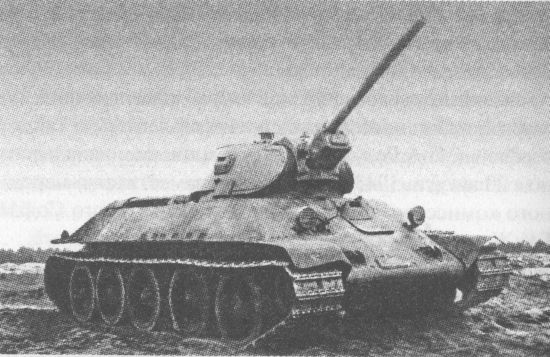
The first prototype equipped with the ZiS-4. Notice that the chassis is the basic T-34/76 model 1940 produced at Kharkov (Factory Number 183).
Production of the guns soon commenced, but ended in September, after 42 examples had been produced. These production tanks were known as T-34 Exterminators, sometimes incorrectly named as T-34/57. this is a correct description of the tank, however an “inaccurate” name, as they were referred to as Exterminators throughout their service careers. The cancilation of the Exterminators was due to may factors, including inadequate resources to manufacture the guns, and the lack of AP shells for the 57 mm (2.25 in) guns. Most importantly, the RKKA did not want to disrupt production of such a vital tank as the T-34. After all, between June 1941 and September 1941, the USSR had lost 20,000 tanks. In October 1941, the number of Soviet tanks fell (for the first and only time) below that of the German army.
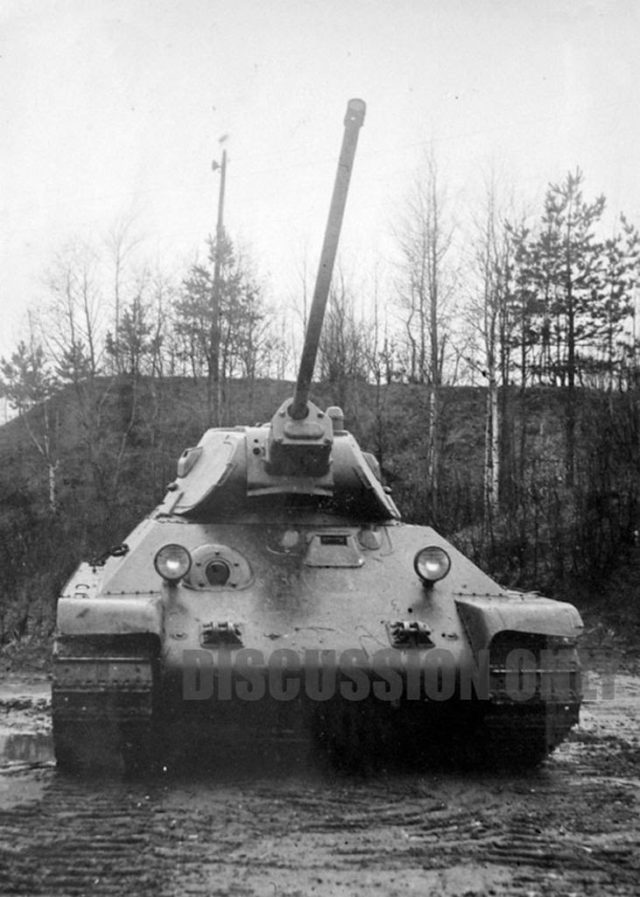
Another photograph of the first T-34/57 prototype. Note the flat recoil mechanism armor on the gun nose. On production vehicles, the gun mantlet would be identical to regular T-34/76 tanks, except for a small ring at the base of the gun.
However, the Red Army was still very interested in the installation of a 57 mm onto T-34 tanks. In 1943, the project was restarted. This time, the Zis-4M gun was installed in a T-34 model 1942/43 tank with the 6 sided “nut” turret. This tank was sent to the front on August 15th 1943 with the “Special Tank Company 100”, but it did not see combat. After this, the 57 mm (2.25 in) gun concept was dropped, as the new D-5 85 mm (3.35 in) gun was already in production.
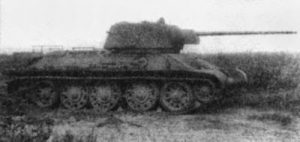
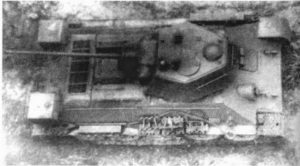
The only T-34 Model 1943 with a Zis-4M gun. These photographs were taken during the Kursk/ Orel offensives.
Chassis and Types
The basic prototype of the T-34 Exterminator was a standard Factory No.183 (Kharkov) tank. It had a welded turret, the early driver’s hatch and the Model 1940 periscope in the turret hatch.
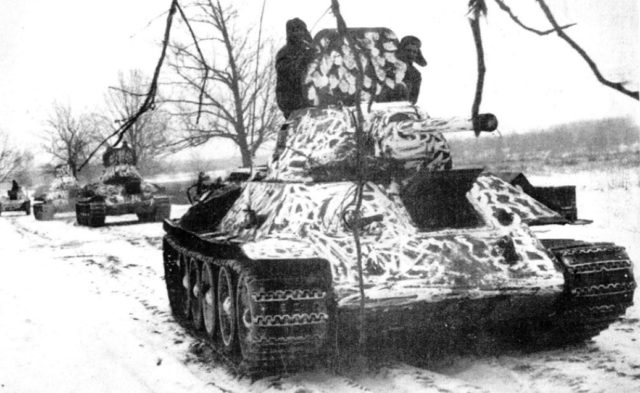
A column of T-34/76 tanks produced at Kharkov. Note the early pattern track, the cast turret and the early pattern driver’s hatch.
Unfortunately, not much information exists of the individual tanks. However, some images of some of the used chassis have survived. The 57 mm (2.25 in) guns were sent to plants 183 (Kharkov) and 264 (STZ Stalingrad). The most famous and recognizable T-34 Exterminator was a late 1941 produced 183 tank, with the new driver hatch, a cast turret, simplified tow hard points and V type 41 track. However, some photos show one tank with the welded model 1941 turret.
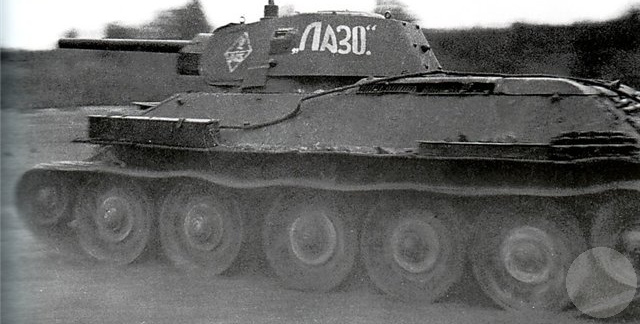
A standard T-34/76 produced at Stalingrad (STZ 264). This tank served with the 116th Tank Regiment in April 1942.
Killer on the prowl
T-34 Exterminator tanks were most notably fielded during the Battle of Moscow. Ten tanks, belonging to the 21st Tank Brigade, were on the Kalinin front. On the 15th and 16th November 1941, this brigade destroyed 18 enemy tanks in ambushes. In addition to this on October 14 1941, the 21st brigade was deployed in the region of Demidov rail station and a day later it was ordered to advance on Turchinovo-Pushkino-Troyanovo and make a flank strike on German troops deployed near Kalinin.
Senior Political Officor E.Gmurya drove his tank along the Volokolamsk highway and met a large column of German trucks. He single-handedly destroyed the whole column that stretched for 3-km in length. After that he advanced with haste towards a recently captured German aerodrome destroyed a bomber aircraft parked there. Unfortunately the tank was knocked out by German artillery and two crew-members were killed. Politruk Gmyrya and Sergeant Ishenko escaped and rejoined the Red Army.
Strangely, 8 ammunition-less T-34 Exterminators were fielded with the 8th Tank Brigade on the Kalinin front on October 19th 1941.
After 4 days, the 21st Tank Brigade destroyed 3 German staffs, killed about 1,000 soldiers, destroyed 34 tanks, 210 trucks and 31 guns. However the brigade took heavy losses including the Commander – Hero of the Soviet Union, Major Mikhail A. Lukin and the Commander of the 1st Battalion, Hero of the Soviet Union Captain M. P. Agibalov.
It is notable that one Soviet tank ace, Jr.Lt. Gorobetz S.H, was deployed with the 21st Tank Brigade and is credited with 7 kills. The most famous T-34 Exterminator is the so-called “white 20”, commanded by major Mikhail A. Lukin, and was lost at Troyanovo.
It would appear that no T-34 Exterminators survived the battles around Moscow, however the tanks had made a name for themselves.
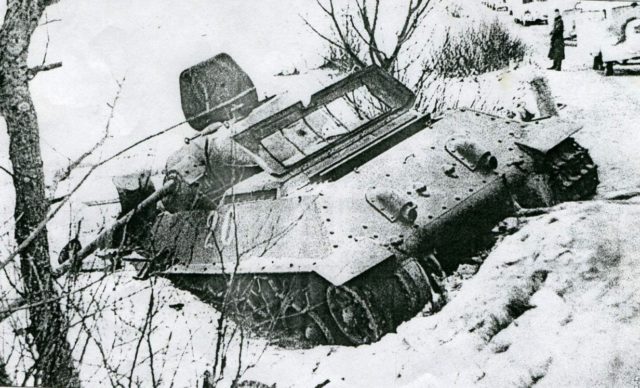
White 20 commanded by Major Mikhail A. Lukin. Notice the cast turret, the improved tow hard points and the V type 41 track. This is by far the most famous Exterminator T-34 built.
Survivor?
There is one T-34 Exterminator on exhibit. However, this is a replica made from parts of real STZ T-34 and a dummy barrel. While not a poor replica, it does not accurately depict an Exterminator tank as it would have appeared in 1941.
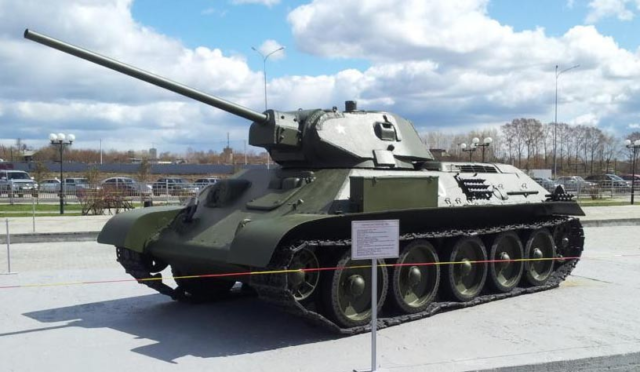
The replica T-34 Exterminator is an interesting mix of parts, including an STZ turret and an 183 hull.

Regular T-34 Exterminator in 1941, Major Mikhail A. Lukin.
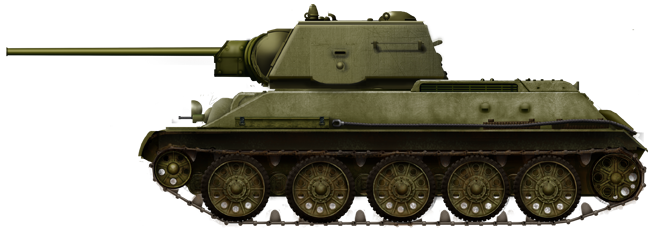
T-34 Exterminator model 1943. Sent to the front on August 1943, never saw action due to the 85MM guns coming into service.
Gallery
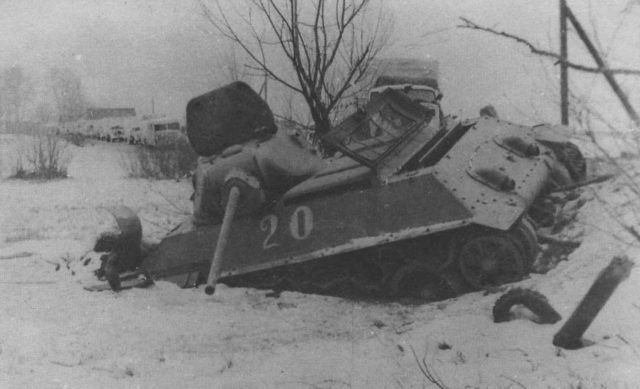
The famous White 20. There is some speculation that the other tanks in this unit were labeled 20-29, but indeed, this is pure speculation. This tank is the only known example of a T-34 Exterminator with the white divisional markings.
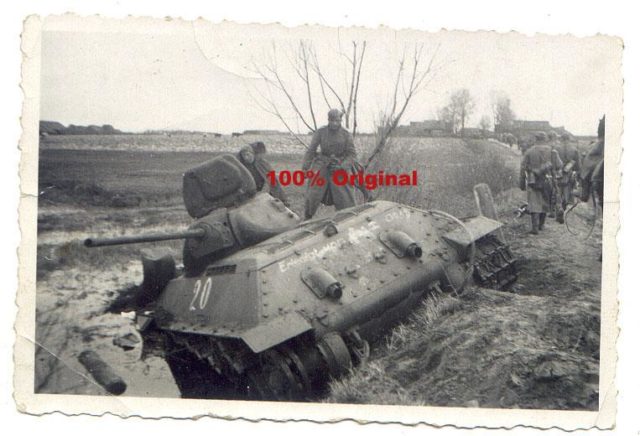 The earliest photo of White 20, before the snow started to fall. The V type 41 track is very obvious in this photograph.
The earliest photo of White 20, before the snow started to fall. The V type 41 track is very obvious in this photograph.
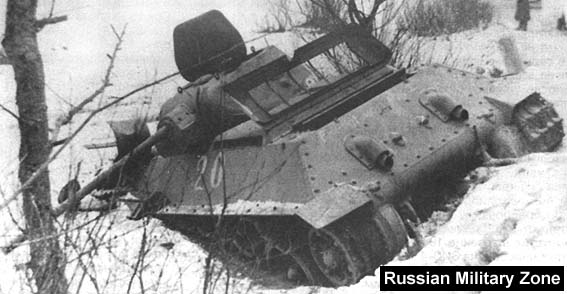
White 20, note the ring at the base of the gun.
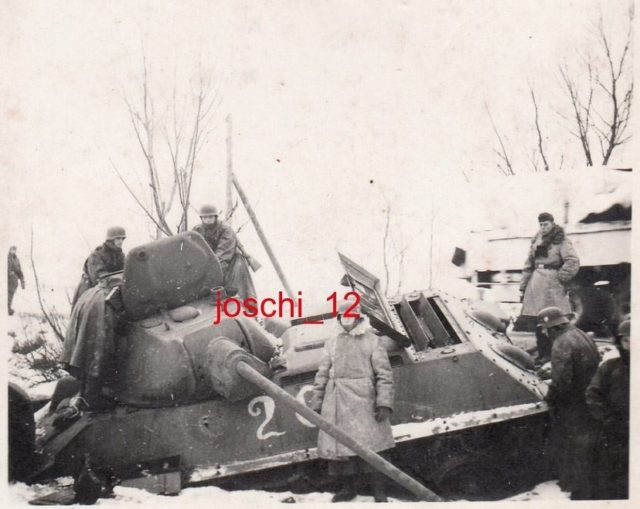
White 20. Notice the standard T-34 vision hatch.
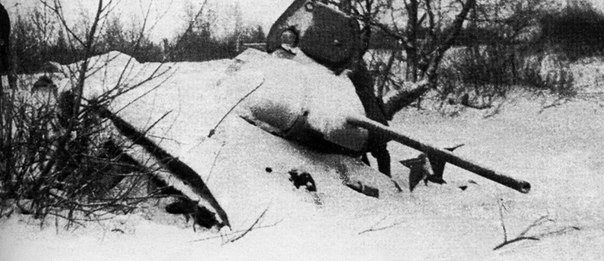
Again White 20 after heavy snowfall. This image indicates that there was a radio installed on the tank. Only 1 in 5 tanks were equipped with a radio.

Note that this is a subtly different type of T-34, with a welded turret, but this tank still retains the V type 41 track and the late driver vision hatch.
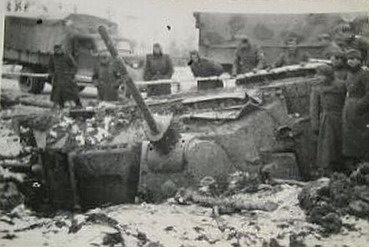
Another T-34 Exterminator based on the early model 1941 chassis.
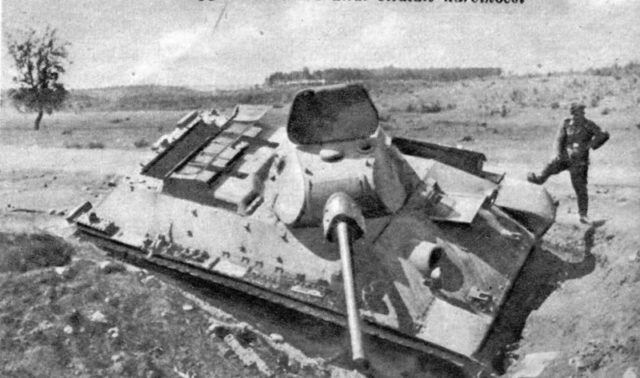
A German soldier posing with an abandoned Exterminator (a ring around the base of the barrel might exist. Some sources claim this to indeed be an exterminator, however it is unclear.)
Sidenote: Other tank with 57 mm guns
The ZiS-2 57mm gun was used on several vehicles, including as the famous ZiS-30 assault gun. This was simply a T-20 Komsomolets tractor with the ZiS-2 gun mounted on the rear. Roughly 130 of these little machines were converted, and were nothing more than making the Zis-2 mobile – their tactics reflected a field gun more than an AFV. The Komsomolets tractor was outclassed by 1941 and was only suited for artillery towing. While not ideal for the mobile artillery/ anti-tank role they served well. All but a hand full were lost in the battles at Moscow.
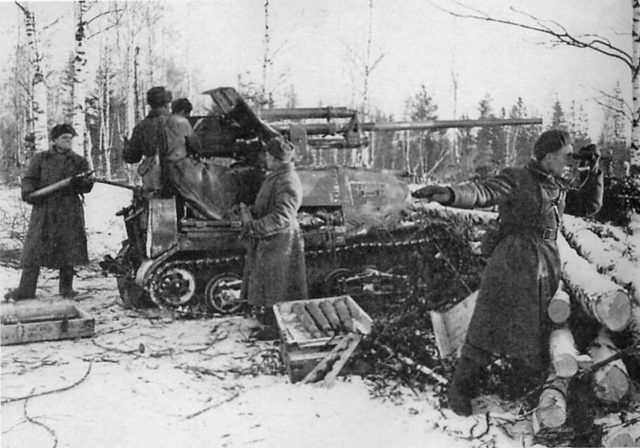
A ZiS-30 Assault Gun in action around Moscow. Roughly 130 of these vehicles were made. Only a handful survived the battles.
At roughly the same time as the prototype T-34 Exterminator, a KV-1 was also tested with the 57 mm gun. It is unknown what happened to this prototype, and the project did not reach production. It is unknown whether the tank was fielded with the Zis-4 or the Zis-2.
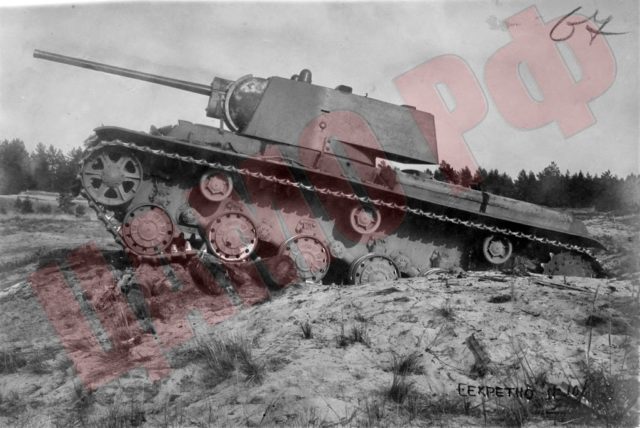
A KV-1 equipped with the ZiS-2 gun. Not much is known about this vehicle, however there appears to be extensive photos of this vehicle at the polygon in 1941.
Sources
T-34 medium tank (1939-1943) – Mikhail Baryatinskiy
On Panzerserra

WW2 Tanks




























WW2 tanks posters

All Tiger tanks liveries.

Panther liveries and variants

WW2 Armour - All tanks











Tanks aces and single tanks series

Find more there

Museums, Movies, Books & Games
The Tanks and Armor in pop culture
Tanks and armored vehicles in general are only really grasped when seen first person: The mass, the scale, it's all there. Explore also the way tanks were covered in the movie industry, in books and in video games.Movies:
Best tanks movie on warhistoryonline.com
On imdb.com
On bestsimilar.com/
miltours.com
liveabout.com/
watchmojo.com
Video Games:
pcgamesn.com
historyhit.com
levvvel.com
vg247.com/best-tank-games
mmobomb.com/
alienwarearena.com

